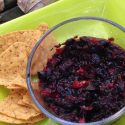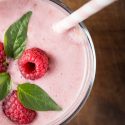Ingredient label break-down: What’s in your food?

Our bodies are INCREDIBLE machines! Did you know that this very minute, your body is forming about 100 million new red blood cells? Replacement of our cells is also occurring in most other tissues in our body, such as your taste buds, stomach, skin, and lungs. This means that we are constantly rebuilding our bodies with “building materials” from the foods and beverages we consume.
“You are what you eat”—makes sense when you think about food as building blocks to your constantly changing body.
When it comes to food, quality matters
Dietary guidelines have certainly changed over the past few decades as we learn more about our bodies and what we should eat to attain optimal health and weight. Strong evidence shows that while calories do matter, food quality is equally important when it comes to overall health—and that includes preventing weight gain and promoting weight loss. Focusing on high-quality foods in an appropriate portion size and minimizing lower-quality foods is a great place to start.
High-quality foods include unrefined, minimally processed foods such as vegetables and fruits, whole grains, healthy fats, and healthy sources of protein—the foods recommended in the Healthy Eating Plate.
Lower-quality foods include highly processed snack foods, sugar-sweetened beverages, refined (white) grains, refined sugar, fried foods, foods high in saturated and trans fats, and high-glycemic foods such as potatoes.
Quality affects not only your body, but it is also important for your mental well-being. Our brains are constantly “running,” and their fuel is the food we choose to eat. This fuel directly impacts the structure and function of your brain; including your mood. Eating high-quality foods supplies your body and brain with the vitamins, minerals, and antioxidants it needs to protect you from oxidative stress (a normal process that occurs in the body) and the imbalance of free radicals and antioxidants in the body that can lead to cell and tissue damage over time.
Generally, your body can regulate this imbalance. However, factors such as diet, lifestyle, health conditions, and environment can contribute to oxidative stress and excess free radical production. Therefore, food is important; you aren’t going to get all the same benefits from a supplement that you can get from food.
Ingredient labels: What to look for
If we are, in fact, what we eat, then reading the ingredient list on food labels is important if you want to choose more high-quality foods. Claims on the front of a package may turn out to be misleading once you investigate the label on the back.
A food item that advertises “contains whole grains” on the front may actually contain more sugar than whole grains once you look at the ingredient list. A food that claims to be free of trans fats may actually contain up to 0.5 grams of trans fats per serving (in the form of partially hydrogenated oils) in the ingredient list.
Important tips:
- Ingredients are listed in descending order of predominance.
- The first two or three ingredients are usually the ones that matter most because they are the main ingredients.
- Ingredients at the bottom of the list may appear in only very tiny amounts.
7 terms experts say to be mindful of:
(1) The word “whole” as in “whole grains”
Especially for cereals, crackers, pasta, and breads, the word “whole” should appear as the first or second ingredient, whether whole wheat, oats, rye, or another grain
One way to double-check is to look at the fiber content on the nutrition label. Whole-grain foods should deliver at least 3 grams of fiber per serving and ideally even more.
Check out Thinking Outside the Whole Grain Box.
(2) Hidden sugars, as in fructose, sucrose, dextrose
Ingredients that end in the word “ose” are all forms of sugar, as are honey and corn sweeteners. All sweeteners add calories but few nutrients, and they can contribute to difficulty managing weight.
To know exactly how many total grams of sugar a product contains, check out the nutrition facts label. Four to 5 grams of sugar is the equivalent of a level teaspoon.
Check out Sugar Statistics and Naturally Occurring and Added Sugar.
(3) Partially hydrogenated oils: Sources of trans fats
These oils are the primary source of trans fats; which are potentially more harmful to arteries than saturated fat.
WARNING: A food item can be marketed as “trans fat free” even if it has up to .5 milligrams of trans fat per serving.
Looking at the ingredients list, if a food contains partially hydrogenated oils then it contains trans fat even if it says “no trans fat” on the front.
If it’s something you don’t eat often, then it probably won’t make a difference in your health. But if you have food items that you eat daily or regularly it may be beneficial to find a brand that does not contain partially hydrogenated oils.
Tips to avoid trans fats:
- Use liquid vegetable oils.
- Avoid eating commercially prepared baked goods (cookies, pies, doughnuts, etc.).
- When foods containing partially hydrogenated oils can’t be avoided, choose products that list the partially hydrogenated oils near the end of the ingredient list.
- Avoid deep-fried foods and desserts in restaurants or request they use only oils and foods that do not contain partially hydrogenated oils.
(4) Artificial sweeteners
Examples of artificial sweeteners: sucralose, saccharin, aspartame, acesulfame
- Aspartame (blue): examples include Nutrasweet and Equal
- Saccharin (pink), as in Sweet’N Low
- Stevia-derived (green), including Truvia
- Sucralose (yellow), as in Splenda
Research on artificial sweeteners:
Some research has also found that people who drink more diet soda became more obese than those who drank less diet soda.
Additional studies have linked metabolic syndrome, stroke, and type II diabetes amongst the highest consumers of diet soda.
Scientists are not sure why this may happen, but speculate that non-sugar sweeteners:
- May cause added cravings for sweet foods.
- Alter the taste perception.
- Change how nutrients are absorbed.
- Lead people to justify eating more because they are drinking diet soda with no calories.
More research needs to be done. No conclusive evidence of dramatic or severe harm has been found.
(5) Sodium nitrate and sodium nitrite
Sodium nitrate and sodium nitrite are used as a preservative in processed meats, and may pose an increased risk for cancer – although the evidence isn’t completely clear
These additives help to stabilize, color, and flavor meat and prevent harmful bacterial growth. However, when meat is heated at high temperatures or combined with stomach acid, they can produce nitrosamines. These are linked to an increased risk of pancreatic and colorectal cancer.
The Center for Science in the Public Interest recommends limiting the amount you consume by choosing nitrite-free products when possible.
(6) Artificial colorings in food
No added nutrient value, and may pose a small risk toward health; however, science is inconclusive
Some studies have found these can cause severe allergic reactions in those with asthma and research suggests a link with hyperactivity in children (although this has not been proven). Often found in cereals, candies, sodas, and snack foods (often marketed to children)
In an ingredient list, artificial colorings often appears with names such as Yellow 5, Yellow 6, Red 40, Red 3, Blue 1, Blue 2, Green 3, and Orange B
(7) Monosodium glutamate (MSG) in food
Often added as a flavor enhancer; MSG has not been shown to post a health risk. However, some people may be more sensitive to this additive and experience:
- Headache
- Flushing
- Sweating
- Fluttering heartbeat
- Shortness of breath
It’s no surprise that our food has dramatically changed over the past six decades. Today, there are more than 10,000 chemicals, also known as food additives, allowed in our food. The Food and Drug Administration (FDA) has the authority to ensure the safety of these chemicals added to our food; however, this can be challenging as there are so many chemicals and we do not all have the same genetic makeup or lifestyle. It’s important for us to do our own research and be mindful of what and how much of these ingredients we are eating and how they may affect our body and our health.
To sum things up

What we choose to consume can either build health or build potential “dis-ease” in the body depending on how often or how much we take in. To keep my sanity and a healthy balance in my life, I follow an 80/20 approach: 80 percent of the time I choose whole, minimally processed, high-quality foods and 20 percent of the time I enjoy some low-quality foods. If you know you have a birthday party on the weekend or an office party on Thursday where you have less control over the quality of the food provided, plan to use some of your 20 percent on that day. The rest of the week, aim for high-quality foods to ensure your body is getting beneficial “building blocks.”
References:
http://book.bionumbers.org/how-quickly-do-different-cells-in-the-body-replace-themselves/
https://www.health.harvard.edu/blog/nutritional-psychiatry-your-brain-on-food-201511168626
https://www.ncbi.nlm.nih.gov/pmc/articles/PMC5737876/
https://www.hsph.harvard.edu/nutritionsource/healthy-weight/best-diet-quality-counts/
https://www.medicalnewstoday.com/articles/324863.php
https://www.webmd.com/food-recipes/features/healthy-ingredients#1
https://www.health.harvard.edu/blog/sweeteners-time-to-rethink-your-choices-2019022215967
https://health.clevelandclinic.org/5-food-additives-you-should-avoid/



